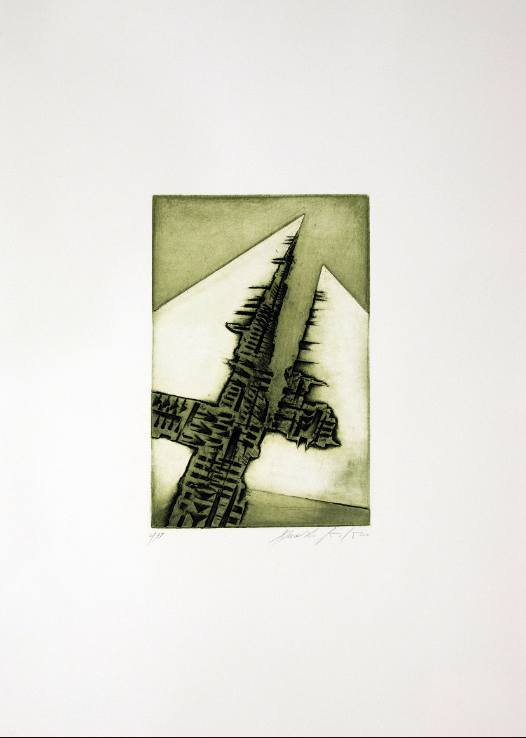In a warehouse at the Rome headquarters in Via Bissolati, a number of lithographs, drypoint prints, etchings and aquatints were recently discovered, plus what appeared to be tempera paintings but, astonishingly, turned out to be silk foulards, beautiful enough to be hung like paintings.
The artworks are held in large folders with the Assitalia logo. Inside, one reads that the zinc plates used to produce prints specially for Assitalia were later scored to prevent further use. Renato Guttuso, Toti Scialoja, Giuseppe Santomaso, Umberto Mastroianni, Achille Perilli, Piero Dorazio, Carla Accardi, Fabrizio Clerici, Giò and Arnaldo Pomodoro, Pietro Consagra, Gino Marotta, Antonio Corpora and Mario Schifano are just some of the artists who created graphic designs for Assitalia during Giovanni Pieraccini’s time as President (1977–1987).
In the 1987 exhibition Arte del Novecento italiano nelle Collezioni Assitalia [Twentieth-century Italian Art in Assitalia Collections] held at Villa Medici, the Roman home of the French Academy, some of these graphic and silk-screen works were exhibited alongside masterpieces by Umberto Boccioni, Alberto Savinio and Giorgio de Chirico. Although minor works, they are of considerable interest as diverse and important examples of twentieth century Italian graphic art.
A recent article (Per esportare cultura serve diplomazia [It Takes Diplomacy to Export Culture], UMBERTO VATTANI, Panorama magazine, 28 December 2017) cites contemporary Italian artists and their sculptures that enhance various cities throughout the world: The Tree of Hope by Mario Rossello and the equestrian statue Zenith by Mimmo Paladino in Brussels; Doppia Bifrontale by Consagra in Strasbourg; the great Sphere Within Sphere in front of the United Nations building in New York and Colpo d’Ala near the Los Angeles Music Centre, both by Arnaldo Pomodoro.
An engraving of Colpo d’Ala is held in the Historic Archive of Ina Assitalia. Italy presented the sculpture to the United States in 1989 to mark the fortieth anniversary of the Marshall plan, which provided the impetus for Italy’s recovery from the devastation of the Second World War.





